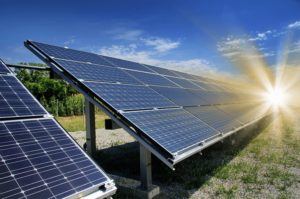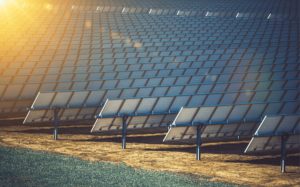If you’re looking for the next best way to generate electricity with minimal energy consumption, solar power plants might be the answer you’ve been looking for! This renewable energy power source is a great way to utilize the sun’s energy without causing any harm to the environment. Solar plants offer various benefits for the Earth and you. Now, isn’t that something?
If you decide to install these for your home, you won’t need to rely on your electrical grid anymore in an emergency!
Now, as you know, every appliance and product has advantages and disadvantages. Keeping this thought in mind, this article will highlight all about solar power plants in detail, along with a few types of solar thermal plants.
Read on to learn more about this clean alternative to power your homes!
Contents
Key Takeaways
- Solar power plants are a renewable energy source that utilizes sunlight to generate electricity, offering benefits such as cost-free electricity production, zero greenhouse gas emissions, and decentralized power generation.
- Solar power plants can be used for various applications, including heating water, providing internal heating systems for houses, running different equipment, and powering electrical appliances, making them versatile and environmentally friendly.
- Despite their advantages, solar power plants have drawbacks such as limited nighttime operation and initial costliness, which may be mitigated through high-capacity energy storage and viewing the investment as a long-term cost-saving solution.
Uses of a Solar Plant
The solar plant is a developing technology that is starting to gain momentum all around the world today. Here are a few of its applications:
- Water Heaters: Many solar plants are being used to heat water. They use the sunlight rays, which are trapped using mirrors and receivers, and then these rays are converted to mechanical energy.
- Heating Systems for Houses: Another application of the solar plant is to provide an internal heating system. Since bills for electric heating can be pretty high, people have started switching toward solar power to heat their houses.
- Run Different Equipment: The heat generated from the plants can help run various equipment, such as a gas turbine or a heat engine.
- Power Electrical Appliances: Many use these plants to power their electrical appliances. Usually, the ones that would give expensive electrical bills are preferred to use with solar thermal power plants.

Benefits of a Solar Power Plant
Aside from using solar energy and being a renewable source, there are numerous benefits that a solar power plant gives us. Let’s take a look at a few of them.
No Cost to Produce Electricity
As you know, solar energy doesn’t require any external factors to work. These power plants use solar panels as their only source of energy. Solar panels use solar rays to generate electricity. It costs absolutely nothing to produce electricity or even maintain it. These solar power plants won’t require you to check on them or pay hefty bills regularly.
No Greenhouse Gas Emission
Besides producing solar PV panels, these plants don’t emit greenhouse gases. All they do is collect and store sunlight to use it as a driving force. It doesn’t require any smoke, gas, or chemicals.
Decentralized Power
Solar plants’ generated electricity doesn’t depend on any other electrical appliance. All you need is sunlight to get the most out of your plant. Since your regular electricity depends on the country’s state, oil, natural gas, and whatnot, it’s beneficial to have a decentralized power system.
Off-Grid Capability
Many of these plants can be off-grid, but what does off-grid mean? Off-grid means being detached from the electricity grid in your house. Your plant will rely on solar radiation instead of state-owned electrical power.
However, as a default, the plants also have an on-grid option if you aren’t getting any sunlight. Off-grid is primarily helpful for people living in rural areas with many power outages.

Disadvantages of a Solar Power Plant
As with every appliance, there are certain disadvantages to these plants. Here are a few of them, along with their possible solution.
Night Issues
The thing with solar energy is that it doesn’t work at night since you are not receiving any access to sunlight. There’ll also be scarce sunlight on winters and rainy days. There are constant fluctuations with these plants, and there’s considerable debate on whether or not you can entirely rely on these power sources.
Solution
A possible solution to this problem can be to find a solar thermal power plant with a high energy storage capacity. This will come in handy whenever you don’t have direct access to sunlight.
Expensive
Another issue with a solar plant is that it’s relatively expensive. Solar panels alone are costly, so a whole system can be expensive. However, with the constant development in technology, it’s safe to say that prices might go down in the future, but there’s always doubt when it comes to price models in an unpredictable market.
Solution
A possible solution to this problem is to think of this as a beneficial investment. It can save you from pricey electricity bills and maintenance costs. You’ll be getting free energy all the time!
Types of Solar Plants
Solar plants are of many types. However, there are two primary ways you can use them.
Passive Use
The first way is passive use. In this, houses are built according to solar power systems. It ensures that solar energy collection is maximum and the sun rays directly hit the house.
Active Use
The second way is active use. For this, you don’t need a specific house design. Solar plants are installed anywhere. This helps power any appliances in your house. Now, let’s look at a few types of solar power plants.

Photovoltaic Solar Power Plants
PV systems are the most common power plants used for homes. This power plant is used to power up electrical appliances you use daily. It consists of PV solar cells that help trap sunlight and convert it into electricity.
Many people decide to install photovoltaic panels on a grid. This helps them collect maximum sunlight, resulting in electricity generation. Residential PV systems can aid in reducing your dependency on electricity.
Solar Thermal Power Plants
The solar thermal power plant is another type of solar plant that is used as power-generating equipment to heat water and whatnot. They collect solar energy. The power plant concentrates sunshine to produce solar thermal power, which is then used to create electricity.
Solar thermal power systems consist of reflectors that trap sunlight on a receiver. A heat-transferring fluid gets the required thermal power to make steam, which is then converted into mechanical energy. This energy subsequently powers the conventional steam turbine generator to produce electricity.
These solar thermal power plants have tracking systems that ensure direct sunlight contact with the receivers. In detail, let’s look at three main types of solar thermal power systems.
Linear Fresnel Reflector Systems
LFR systems are linear thermal power plants. They use the Fresnel Lens effect to help concentrate sunlight onto the receivers. The mirrors have a large aperture and a small focal length. Their concentration is approximately 30 times of typical thermal power plants.
Parabolic Trough Systems
The illustrative system is another type of linear solar thermal power plant. In this system, a parabolic-shaped reflector is used to concentrate sunlight. The receiver is usually located at the center of the parabola.
The thermal energy storage rotates through the day according to the sun’s movement. These trough systems can help concentrate the sun’s rays 30 to 100 times more effectively thanks to their shape.
Solar Power Towers
These types of solar thermal plants use flat mirrors known as heliostats. These sun-tracking mirrors concentrate the sunlight onto a receiver up to 1500 times. Some of these towers use water as the heated fluid.
They hold energy storage capabilities to help power appliances even in cloudy weather. Modern designs of these power towers use nitrate salt since it has a high energy storage capability.
Solar Dish
As the name suggests, these systems use a large solar dish as a mirror. The shape helps to absorb and concentrate sun rays onto the receiver, which is then transferred to a generator. The heat transfer fluid is used to create mechanical power and move pistons. It is used to generate electricity.
The solar dish’s concentration ratio is much higher than linear thermal power plants. This is because they always direct sunlight to the dish’s focal point. It makes it suitable for remote locations.
Experience Solar Excellence with Us!
Trust in Solar Panels Network USA, where our seasoned experts deliver top-quality solar solutions for homes and businesses nationwide. With a legacy of countless successful installations and a commitment to sustainable energy, we’re your reliable partner in the solar journey. Ready for a brighter, eco-friendly future? Call us now at (855) 427-0058 and harness the sun’s power!
Final Words
After a detailed explanation of solar plants and their types, you now know what plant would be best for your house. If you want flexible usage, PV systems are great. However, thermal power plants are the way to go if you’re looking for restricted use!
Even though these plant systems can be relatively expensive, their investment is worth it. They can provide individuals with numerous benefits. Though the system has a few cons, the pros outweigh them all.
About the Author
Solar Panels Network USA stands at the forefront of solar energy solutions, driven by a team of seasoned solar engineers and energy consultants. With over decades of experience in delivering high-quality solar installations and maintenance, we are committed to promoting sustainable energy through customer-centric, tailored solutions. Our articles reflect this commitment, crafted collaboratively by experts to provide accurate, up-to-date insights into solar technology, ensuring our readers are well-informed and empowered in their solar energy decisions.

